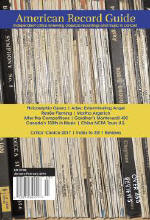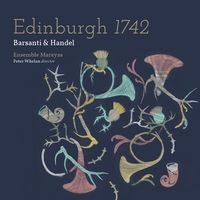|
Reviewer: John
W. Barker
The album title here is “Edinburgh 1742”. There are several
motivations for it. First, to celebrate the activities of the Edinburgh
Musical Society, 1728-97. But also to take note of Scottish music in the
17th Century. Also to point up the fascination in the British Isles at this
time with the French horn, usually in pairs. But, above all, there is the
desire to demonstrate the connections with the Society of the two composers
presented. Though Handel had little personal contact with the Edinburgh
Society, his music had a steady presence in their concerts, both in and
beyond his lifetime. So here we have a “Concerto in F” consisting of two
movements from the Water Music that include two horns. There are also two
opera excerpts that also include that pairing: an aria from Alcina—strongly
sung by mezzo-soprano Emilie Renaud—and a march from Tolomeo. But Handel’s
contributions here are dwarfed in quantity as well as novelty by what we are
given of the little-remembered Francesco Barsanti (c.1690-1775), who had
close involvement with the Society. Of a direct Edinburgh nature is his
publication titled A Collection of Old Scots Tunes, for treble instrument
and bass. We have four examples here, with violin. The largest amount of
space is given to Barsanti’s concertos. In his Op. 3, published in Edinburgh
in 1742, there are ten concertos; and half of them call for two horns (and
timpani) with the conventional strings and continuo. Those five are all
given here. I can recall one or two earlier recordings of some of these, but
they are long gone, so this would be the first chance for most listeners to
become acquainted with these works on CD. Given Barsanti’s nationality and
background, these concertos are essentially in Italian form, all but one in
four movements, the outlier in three. The style is post-Corellian, but the
inclusion of horns is unconventional. The two are used in the British
fashion, rather as trumpets might be otherwise, with the timpani backup that
trumpets would have presumed. The music for these concertos may not be up to
the highest standards of imagination is such a form, but it is certainly
enjoyable. The main ensemble consists of 11 string players, plus
harpsichord: its sound is a bit on the thin side, but the horns add a lusty
quality. Barsanti may be a minor composer of the late Baroque, but it is
good to have him given some rare accessibility in this release.
Fermer la fenêtre/Close window
|




